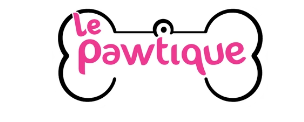
Here are 8 ways you can do something TODAY to kick start your dog's weight loss program!
1.) Food
Most prescription diets are high in carbohydrates and low in meat protein and fat.
FACT: Protein and carbs have the same calories however protein builds lean muscle and carbs are stored as fat. Fat must be given in correct amounts - it provides twice the amount of calories p/gram to protein and carbs so must be given in moderation, however if to too little fat is given then your dog will constantly be hungry.
<What to look for on food labels>
- Protein content must be more than 25% - the higher the better, generally means higher the protein, lower the carbs
- Fat content should be between 12 – 16%
- Avoid food with high fiber (more than 5 – 6%) – this is the left over carbs that cannot be digested which can interfere with absorption if too high. One top weight loss vet brand has an alarmingly high amount of 26% fiber, of which 10% is cellulose (pretty much sawdust).
Orijen Adult represents a good ratio - 40 percent protein, 16 percent fat, 2.5 percent fiber
Canned food is normally higher in protein than dry food - just check quality
If you are making food from scratch use lean meat, low fat dairy, greens instead of grains and starch. Remove fat from meat and avoid your fatty meat such as pork, lamb and high fat beef or cook to remove most fat. You can also include eggs and if you want use some of this to replace commercial kibble – it will remove some of the carbs.
Check out our range of high protein, med fat and zero / low grain dog food. View HERE
2.) How much do I feed?
Reduce gradually – reduce initially by 5% -> weigh your dog in one to two weeks and if they have not lost weight then reduce by another 5%
If you switch to a new high protein, low carb diet you will need to cut down drastically as this food is more nutritionally dense.
Weigh every time – don’t guesstimate !
3.) Monitoring your dog’s weight
Weigh your pooch regularly – you should aim for 1% body weight p/week; 3 – 5% p/week.
4.) Treats
Treats, although small here and there can be a huge factor in weight gain as they go almost unnoticed. They are important in a dog’s life if used for reward and changing behaviour. Try and avoid fatty, calorie induced and large treats. We give our dogs fruit and veggies, the favourite being carrots – you can also give celery, broccoli and zucchini. Try bananas and apples but avoid raisins and grapes. OrIjen Treats are high quality, low calorie and nutritious - just in moderation. They have approximately 5 calories p/ treat
5.) Chews
Avoid fatty chews like pig’s ears and look for something that can last a long time like Stagbars (naturally shed antlers) and Nylabones (peanut butter, bacon or chicken flavoured non-toxic nylon chews) that are designed to last for months or raw hide (non-peroxided). It provides the chewing pleasure without the calories.
6.) Toys and Stimulation
You can also fill interactive toys like Kong and Westpaw Tizzi and Toppl with kibble or treats to provide stimulation or try a Slow Feed Bowl to slow down food intake and turn meal times into fun times!
7.) Exercise
This goes without saying! As we know from our own experience exercise turns fat into muscle improving the overall body condition. Hydrotherapy or exercise like swimming with non-bearing weight is great for joints
8.) Variety is the spice of life
Feed smaller portions throughout the day if you feel you need to and your lifestyle allows for it. Replace some of the usual kibble with fresh meat or canned food so they think they're getting something special. Put food in interactive toy or food dispensing device. Freeze dry or wet food with low fat yoghurt in a Kong or Westpaw Tizzi make him work for it. Give carrot stick so they don’t feel deprived! Exercise to distract and take mind off food!
If your dog is constantly hungry try changing food to high protein, low carb diet.
